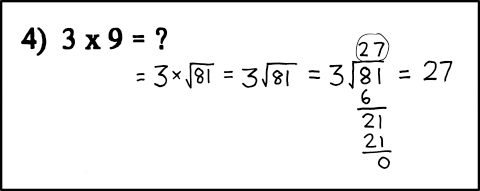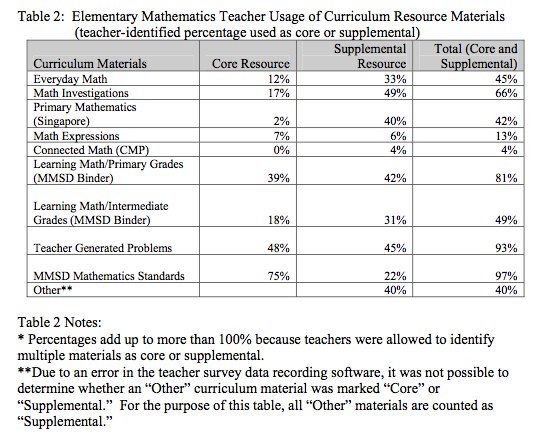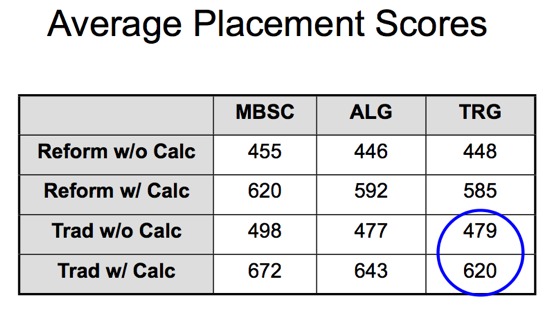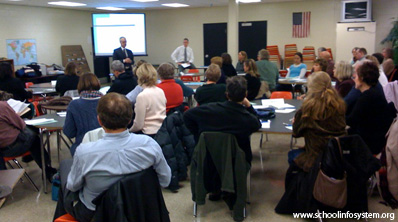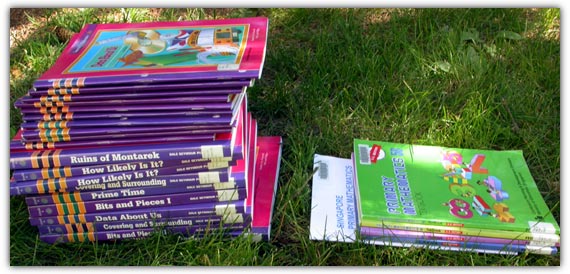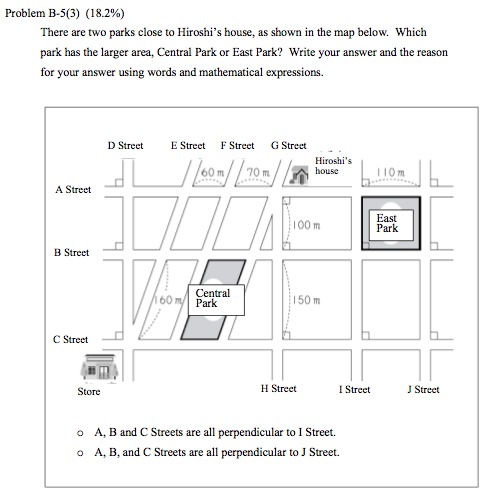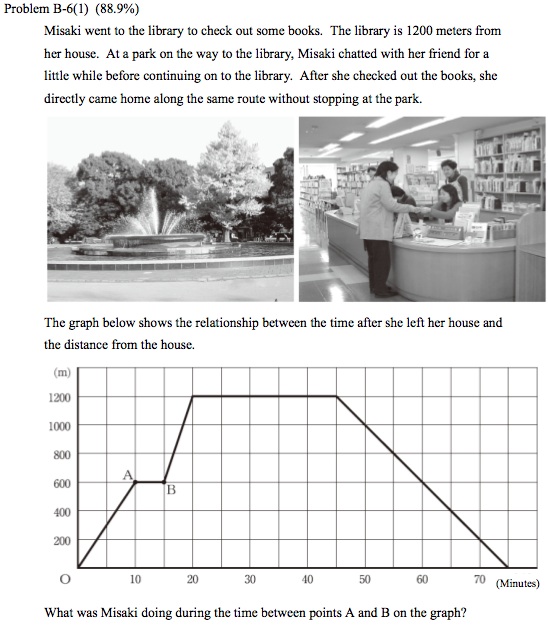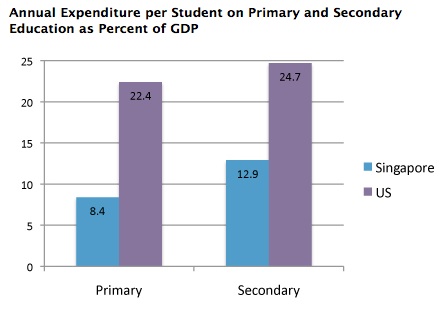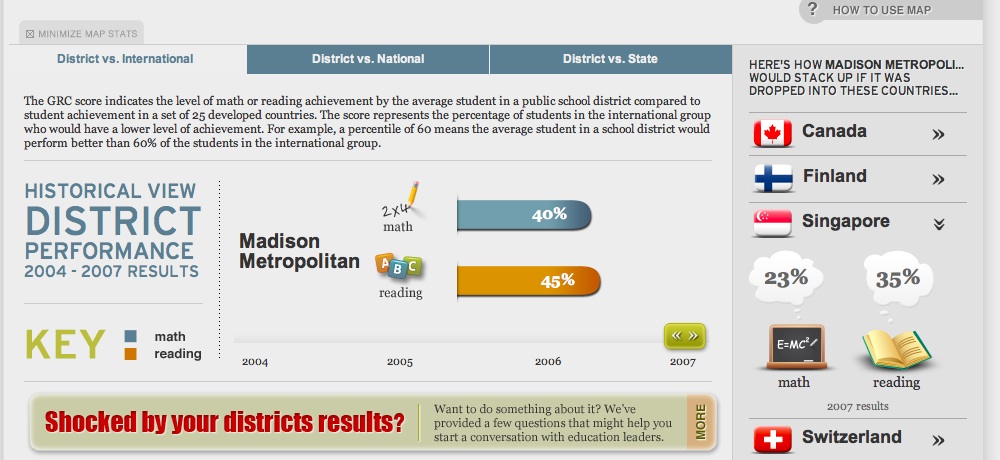380K PDF Press Release [AP’s posting of DPI’s press release]:
Results for statewide testing show an overall upward trend for mathematics, stable scores in reading, and a slight narrowing of several achievement gaps. This three-year trend comes at a time when poverty is continuing to increase among Wisconsin students.
The 434,507 students who took the Wisconsin Knowledge and Concepts Examinations (WKCE) and the Wisconsin Alternate Assessment for Students with Disabilities (WAA-SwD) this school year showed gains over the past three years in mathematics in six out of seven grades tested. Reading achievement at the elementary, middle, and high school levels was stable over three years. An analysis of all combined grades indicates a narrowing of some achievement gaps by racial/ethnic group.
“These three years of assessment data show some positive trends. While some results point to achievement gains, we must continue our focus on closing achievement gaps and raising achievement for all students,” said State Superintendent Elizabeth Burmaster.
Andy Hall notes that Madison Trails State Averages [Dane County Test Result Comparison prepared by Andy Hall & Phil Brinkman – pdf]:
But in the Madison School District, just two of the 23 proficiency scores improved, while five were unchanged and 16 declined, according to a Wisconsin State Journal review of the 2006-07 and 2007-08 school year data from the state Department of Public Instruction.
Madison’s scores trail the state average in 22 of the 23 scores. Typically the percentage of Madison students attaining proficient or advanced ratings trails the state average by several percentage points.
“The fact that we’re able to stay close to the state average as our demographics have made dramatic changes, I think is a positive,” said Madison schools Superintendent Art Rainwater, who added that the district’s “strong instructional program” is meeting many of the challenges of immigrant and low-income students while ensuring that “high fliers are still flying high.”
A district analysis shows that when the district’s students are compared with their peers across the state, a higher percentage of Madison students continue to attain “advanced” proficiency scores — the highest category.
Madison students who aren’t from low-income families “continue to outperform their state counterparts,” with higher percentages with advanced scores in reading and math at all seven tested grade levels, the district reported.
Rainwater said he’s long feared that the district’s increasingly needy student population, coupled with the state’s revenue limits that regularly force the district to cut programs and services, someday will cause test scores to drop sharply. But so far, he said, the district’s scores are higher than would be expected, based on research examining the effects of poverty and limited English abilities on achievement.
This school year, 43 percent of Madison students are from low-income families eligible for free and reduced-price lunches, while 16 percent of students are classified as English language learners — numbers that are far above those of any other Dane County school district.
Rainwater noted that students with limited English abilities receive little help while taking the reading and language arts tests in English.
Tamira Madsen:
Reading test scores for Madison students changed little compared to 2006-07, but math results decreased in six of the seven grades tested. Of 23 scores in five topics tested statewide, Madison lagged behind state peers in 22 of 23 of those scores.
Madison Superintendent Art Rainwater attributes the district’s performance and trends to the growing population of English language learners in the district.
Officials now are able to draw upon three years of results since Wisconsin began administering testing to students in grades three through eight and grade 10 in reading and mathematics. Based on state regulations, students in fourth, eighth and 10th grade were also tested in language arts, science and social studies.
Alan Borsuk on Milwaukee’s results:
But there is little room for debate about what the scores say about the need for improvement in the outcomes for Milwaukee Public Schools students: The gaps between Milwaukee students and the rest of the state remain large, and school improvement efforts of many kinds over the years have not made much of a dent.
The problem is especially vivid when it comes to 10th-graders, the highest grade that is part of Wisconsin’s testing system. The gap between sophomores in Milwaukee and those statewide has grown larger over the last two years, and, once again, no more than 40% of 10th-graders in MPS were rated as proficient or better in any of the five areas tested by the state. For math and science, the figure is under 30%.
Amy Hetzner notes that Waukesha County’s test scores also slipped.
Notes and links regarding the rigor of Wisconsin DPI standards. DPI academic standards home page. Search individual school and district results here. The 2006 Math Forum discussed changes to the DPI math test and local results.
TJ Mertz reviews Wright Middle School’s results.
Chan Stroman’s June, 2007 summary of Madison WKCE PR, data and an interesting discussion. Notes on spin from Jason Spencer.
Jeff Henriques dove into the 2007 WKCE results and found that Madison tested fewer 10th graders than Green Bay, Appleton, Milwaukee and Kenosha. There’s also a useful discussion on Jeff’s post.
Advocating a Standard Grad Rate & Madison’s “2004 Elimination of the Racial Achievement Gap in 3rd Grade Reading Scores”.
Madison School District’s Press Release and analysis: Slight decline on WKCE; non-low income students shine
